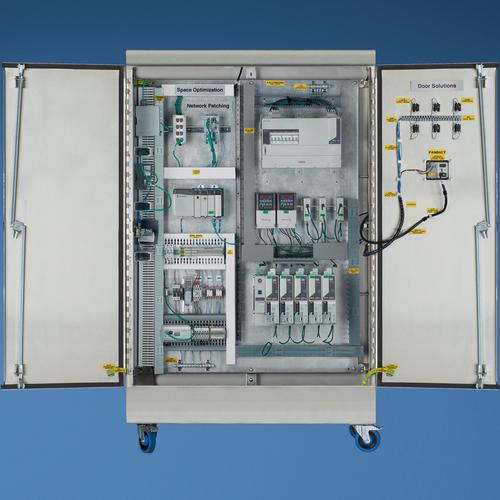Any electrical system‘s power distribution panel design is an essential component.
In addition to guaranteeing the system’s stability and safety, a power distribution panel is in charge of distributing electrical power from the primary source to other loads and devices.
Designing a power distribution panel entails choosing the right parts, figuring out the best layout, and making sure all safety rules and regulations are followed.
Understanding the system’s needs and defining the loads that need to be powered are the first steps in the design process.
The electrical component designer chooses the suitable circuit breakers, transformers, busbars, and fuses based on this data.
These components’ size and rating are carefully chosen to make sure they can manage the anticipated electrical load and offer the necessary protection.
Types of industrial electrical panels
Industrial electrical panels come in a variety of varieties and are utilized in several applications.
Some of the most typical styles of industrial electrical panels include the following:
Distribution panels are used to deliver electrical power to various loads or gadgets.
They have fuses, circuit breakers, and other parts required for power distribution.
- Motor Control Centers (MCCs)
In industrial applications, MCCs are used to monitor and control motors. these include overload relays, motor starters, and other elements crucial for motor control.
1. Power Control Centers (PCCs)
PCCs manage and distribute electrical power for substantial industrial activities.
These include parts for power distribution such switchgear, transformers, and other parts with a unique power distribution panel design.
2.Lighting Control Panels
In industrial applications, lighting control panels are used to regulate and keep track of lighting systems.
These include parts like switches, timers, and lighting relays.
3. Instrumentation Panels
Industrial operations are monitored and managed using instrumentation panels.
These include parts like sensors, transmitters, and control gadgets.
4. Control Consoles
In industrial settings, control consoles are used to monitor and control a variety of machinery and procedures.
These include parts like switches, displays, and other control mechanisms.
Junction boxes are used to contain electrical connections and safeguard them from the elements.
These include parts like fuses, relays, and terminal blocks.
These many types of electrical control panel mentioned are each created to satisfy certain demands and specifications for distinct industrial uses.
To guarantee safety, dependability, and efficiency, it’s critical to select the proper kind of panel for your particular application.
Electrical control panel design
A power distribution panel design incorporates a number of crucial factors.
To choose the proper components, such as circuit breakers, fuses, switches, relays, and other components required for power distribution, it is first important to evaluate the load needs of the system.
The installation environment should be taken into consideration while choosing the casing for the power distribution panel.
The enclosure needs to be sturdy and capable of shielding the components from external elements including moisture, dust, and sunlight.
The safety and efficiency of the power distribution panel depend on proper wiring.
Every wire needs to be appropriately sized, insulated, and routed to avoid any potential risks.
For simple identification, wiring should also be color-coded and labelled.
The process of design must also include the creation of a schematic diagram.
The components, wiring, and connections for the power distribution panel will all be shown on a schematic design.
During installation and maintenance, this diagram will be utilized as a guide.
Why Power House?
For more than 25 years, Power House has offered power distribution solutions to a range of sectors, including oil and gas, petrochemicals, maritime, power generation, and others.
While creating their power distribution panels, we ad here to strict quality control procedures and employ high-quality components.
They guarantee that their panels ad here to client specifications and industry norms.
Moreover, we have a group of skilled engineers and technicians that offer guidance and technical assistance during the design, installation, and maintenance phases.
We collaborate closely with customers to comprehend their needs and offer specialized solutions.
We provide maintenance, repairs, and replacement components as part of our after-sales service.



